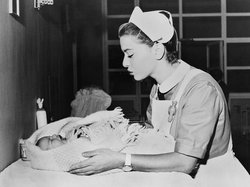History of Midwives in Arizona
Public support for homebirths attended by midwives in the United States has increased since the natural childbirth movement of the 1970s and 1980s. On an international scale, many women in developed nations see homebirth as the safest option. Though there is scant information as to why women in the United States choose homebirths, research and data collected from studies conducted in other developed countries found common themes amongst consumers of homebirths, including but not limited to: control, comfort, freedom to move, and fewer medical interventions during labor.

Women in the United States also choose out-of-hospital births due to barriers such as transport to health services in rural areas, access to another provider, and cost (homebirths cost on average, a third of the cost of hospital births).
Licensing for direct entry midwives in the US was a long process, beginning in the early 20th century in the northeast, where there was a high concentration of immigrants served by “old country” midwives. By 1975, 22 states and the District of Columbia had licensing laws. Significant events punctuating this period included the emergence of trained nurse midwives in the 1930s, followed by the incorporation of the American College of Nurse Midwives (ACNM) in 1955. In 1958, an exposé in Ladies’ Home Journal revealed many women’s negative and traumatic experiences in hospital maternity wards, shedding popular light on a growing dissatisfaction with hospital births following the era of twilight sleep.
Arizona began licensing midwives in 1957 through the Department of Health Services. At this time, 25 women were licensed based on “evidence of sufficient knowledge and skill to assure reasonable safety for clients.” As women from poor and rural areas of the state became attuned to hospital-based obstetric care, fewer women demanded licensed midwives for their care. Revisions to Arizona’s licensing regulations were made in 1978, after a noticeable increase in demand for licensed midwives. These amendments instituted more stringent qualifications and education requirements. Amendments were made again to these regulations in 1990s, creating a more complex application for midwives, which have since become outdated.
Thank you to the Mel and Enid Zukerman College of Public Health at the University of Arizona, Tucson for finding this valuable information in their April 2013 report to The Arizona Department of Health Services.